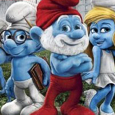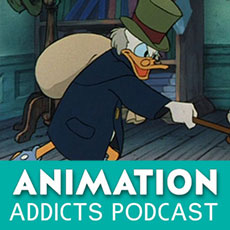Charles Dickens’ A Christmas Carol is one of the best-known and best-loved stories in the English language. Written in 1843, it tells the tale of the miserly Ebenezer Scrooge, who is taught the true meaning of the holiday season by a parade of ghostly visitors. Given its potent blend of fantasy, humor, spine-tingling spookiness and unabashed emotion, it’s no surprise that the novel has been catnip to filmmakers as long as films have been made, and there have been literally dozens of cinematic adaptations of the story, including Disney’s touching animated featurette, the unforgettable Muppets’ rendering and the filmed version of Alan Menken’s magnificent musical.
Now, the latest one comes from director Robert Zemeckis, features a starry cast that includes Jim Carrey, Gary Oldman, Colin Firth, Robin Wright Penn and Bob Hoskins, and employs the state-of-the-art technique of 3D performance capture. But, to the director – who is known at the same time as being the champion of this cinematographic technique – Disney’s A Christmas Carol is not first and foremost about technology, but rather about a great story now to be told in being true to Dickens’ original vision.
Zemeckis’ comments, made at the 2009 Cannes Film Festival last summer, have been circulated as a promotional article by Disney, reprinted below.
Question: A Christmas Carol was first published nearly a hundred and seventy years ago. Why do you think it was instantly popular and still connects with people today?
Robert Zemeckis: When I first read A Christmas Carol when I was young the thing that impressed me was the time travel element and the macabre images of ghosts and just how suspenseful it was. But it’s also an amazing and beautiful human story of redemption and that, of course, is universal and timeless. It still has something to say to us.
Q: Given how many previous film versions of A Christmas Carol there have been, what made you think there was room for one more?
RZ: For one thing, I think a great story can be told and retold in any number of different ways. What also made this the right moment for a new version is that until now we’ve just not had the cinematic tools to actually present the story the way it’s written. It really is amazing how filmic Charles Dickens’ imagination is even though he was writing so long before cinema was invented. To give you an example, in nearly every film of A Christmas Carol the Ghost of Christmas Past is played by a woman in a white wedding dress or with a sheet over her head. But you read the story and the Ghost of Christmas Past has a jet of light streaming from her head. The great thrill for me was having the tools to do justice to what Dickens wrote and put all these surreal and fantastic images up there on screen.
Q: Was Jim Carrey your first choice to play Scrooge?
RZ: Absolutely. I knew Jim would be unbelievably flawless and because he’s such a perfectionist that he would approach the character with more attention to detail and more intensity that probably any other actor would. When Jim performs he doesn’t just do a voice, he doesn’t just do a dialect, his entire body and every muscle in his body transforms and he exudes the character. He’s truly magnificent as Scrooge.
Q: Doesn’t he play other characters as well?
RZ: Yes, he plays all three ghosts: Christmas Past, Christmas Present and Christmas Yet to Come. Some of the other actors play multiple roles as well. Bob Hoskins plays two different characters and Gary Oldman plays the ghost of Scrooge’s former business partner Marley, as well as Scrooge’s clerk Robert Cratchit and Cratchit’s son, Tiny Tim. We have a wonderful cast, which also includes Robin Wright Penn and Colin Firth
Q: As an American, were you at all worried about tackling a beloved British classic?
RZ: We gave a lot of attention to getting the details right and especially the accents. We had British experts on set all day long. But English directors do films about America all the time and often have a very interesting way of seeing things that an American director might not even notice. So I think it can work both ways.
Q: How about the fact that the film has been made in 3D? Is that going to add a lot to the experience?
RZ: I think when 3D is done right you fell immersed in the world up there on screen, yes. But the motion capture technique adds a lot too. There’s a real purity about the performances that comes through on screen. And because the film is digitally rendered, you’re also going to see images of London that would be impossible in a conventionally made film because the London that Dickens knew and described no longer exists.
Q: Is it hard to get the balance right between pushing the technological boundaries of filmmaking and simply telling a good story.
RZ: Cinema has always been a blend of art and technology. A close-up is a special effect. Sound used to be a novelty. But no one thinks about what goes into recording a voice while they’re watching a film any more. And it will be the same with 3D pretty soon. We’ll stop paying attention to how vivid the images are and just be transported by them. Technology should serve the story, not the other way round but what’s remarkable when you read A Christmas Carol is that it’s as if Charles Dickens wrote this story to be a movie. It’s so visual and cinematic and I wanted to use the latest technology to tell the story the way I think Dickens must have seen it in his mind’s eye.
Q: So in the end it still all comes back to the story?
RZ: Yes, and fortunately in A Christmas Carol we have a great story. I mean, you take the meanest man alive and show him the error of his ways… and we get to come along for the ride.






